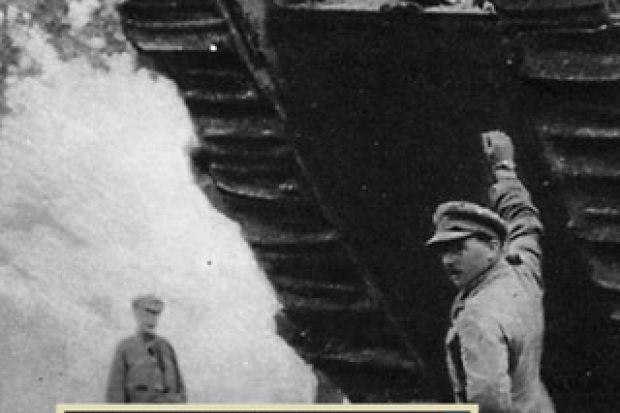The centenary of the Great War has been marked by a plethora of books, articles and television programmes, and this trend will continue as the anniversaries of battles and campaigns are commemorated over the next few years. One of the reasons this war continues to command such attention lies in its continuing ability to generate debate and controversy, as was demonstrated last year in the UK when historians, politicians and commentators had their own “war” over the place of the conflict in historical memory. Uncertainty continues to characterise attitudes towards the hostilities and the jury is still out on some major issues, such as the causes of the crisis, the extent of German culpability, the reasons for Britain’s involvement, the justice of the Allied cause and the competence of politicians and military leaders.
A. W. Purdue’s ability to get to grips with these debates makes this book especially valuable. In only 80,000 words, he explores current areas of enquiry in the diplomatic, political and military histories of the war, and, to a lesser extent, its social and economic strands. While the war years in Europe are his focus, he also touches upon memory and present-day attitudes towards the conflict, as well as the people, places and campaigns in Africa, the Balkans, the Middle East and Asia that made the Great War a world war. Although his study draws upon the work of several historians, his own stamp can be seen throughout.
He follows Christopher Clark and others who have challenged the long-standing notion that the conflict was inevitable, or that Germany was primarily responsible for the war. The complicated series of events that became known as the July Crisis of 1914 is masterfully synthesised as Purdue evaluates the long-term and immediate factors that helped to create the conditions that made war possible, and he argues that the actions of key decision-makers, both military leaders and politicians, were crucial in allowing Europe to “sleepwalk” into war. In asking who was responsible for the conflict, he suggests that culpability was spread across nations big and small, but identifies particular elites within Austria-Hungary and Russia whose actions were of greater consequence in bringing about a European conflagration. Readers will be shocked to discover that, with the possible exception of Russia, “none of the powers went to war with specific aims – their war aims emerged as the war continued”.
As Purdue goes on to show how the war unfolded, the greatest strength of this book lies in its analysis of land and sea battles. He weighs up offensive versus defensive tactics and argues that a policy of defence was the best strategy employed on the Western Front, something that Germany adopted from April 1915 until March 1918, and at sea, where the high cost of battle cruisers and dreadnoughts encouraged the Royal Navy and German High Seas Fleet to avoid engagement unless victory was probable. He judges battles such as the Somme, where “there was no great strategic reason for an offensive…and some reason to doubt its suitability”, and Passchendaele, which “may well have been the most pointless battle of the war”, and he challenges major shibboleths, reminding us that “trenches saved lives” and it was only when soldiers left these that they could be killed or wounded.
Although less attention is paid to the home fronts, Purdue highlights the unwillingness of many societies to push for peace. Governments were elected to wage war successfully and politicians fell when they were felt not to be vigorous enough. Given our present uncertainty over the inevitability of the conflict, one of the most perplexing facts about the war is that many populations continued to back their servicemen until the end because, as Purdue notes, the notion had been established in 1914 that the war was a righteous one of defence. The high casualty rate was crucial in sustaining support, and when the conflict ended the desire to mourn those who had fallen was perhaps the only post-war experience common to all the belligerents, regardless of which side they had been on.
Rich in enquiry and subject matter, this book is recommended for students, general readers and historians who seek the latest overview of a conflict that shaped the 20th century.
The First World War
By A. W. Purdue
Palgrave Macmillan, 240pp, £60.00 and £21.99
ISBN 9781137331069, 1052 and 1076 (e-book)
Published 5 December 2014
Register to continue
Why register?
- Registration is free and only takes a moment
- Once registered, you can read 3 articles a month
- Sign up for our newsletter
Subscribe
Or subscribe for unlimited access to:
- Unlimited access to news, views, insights & reviews
- Digital editions
- Digital access to THE’s university and college rankings analysis
Already registered or a current subscriber? Login





